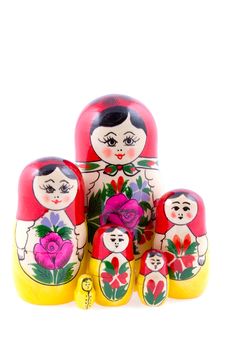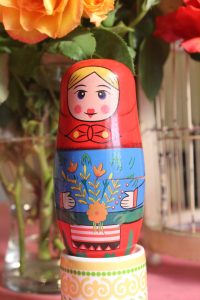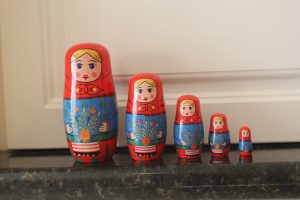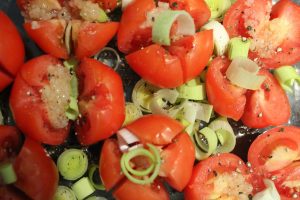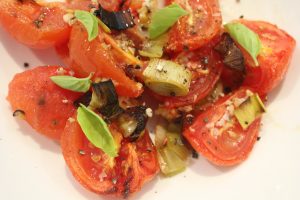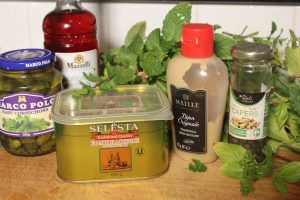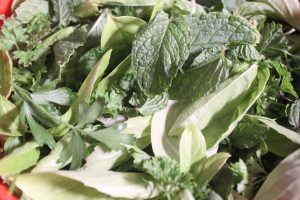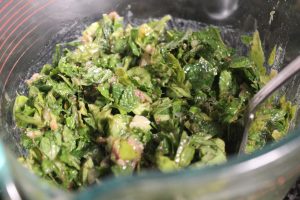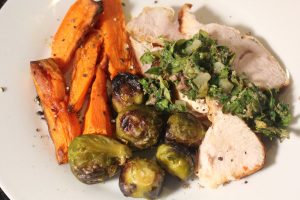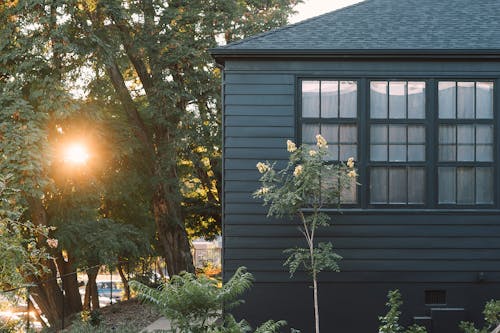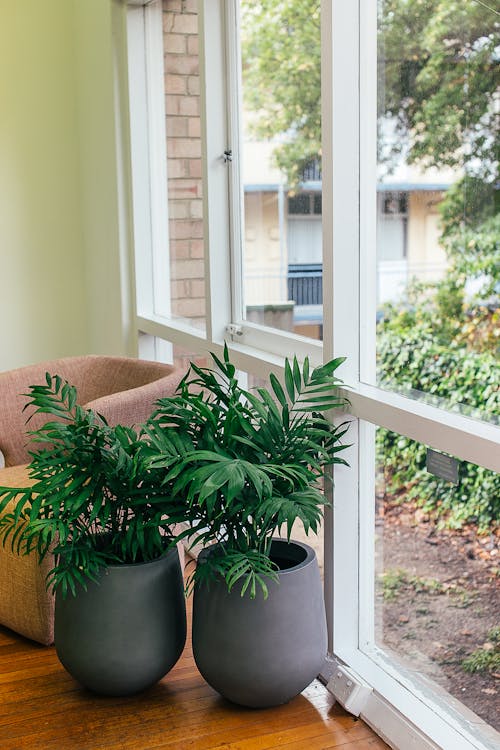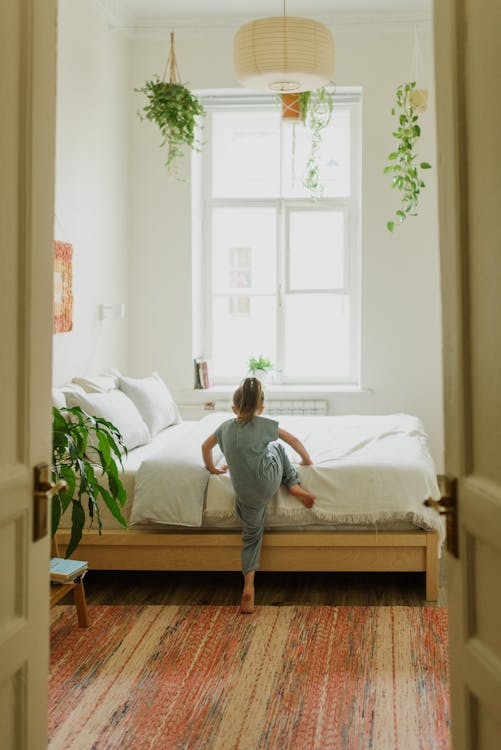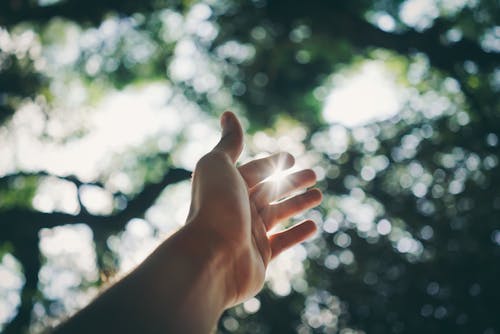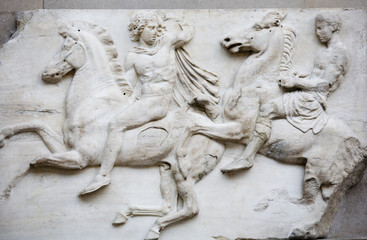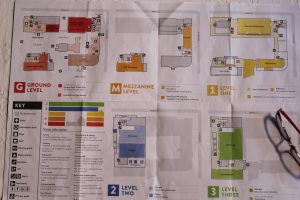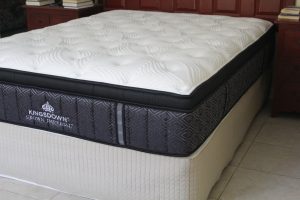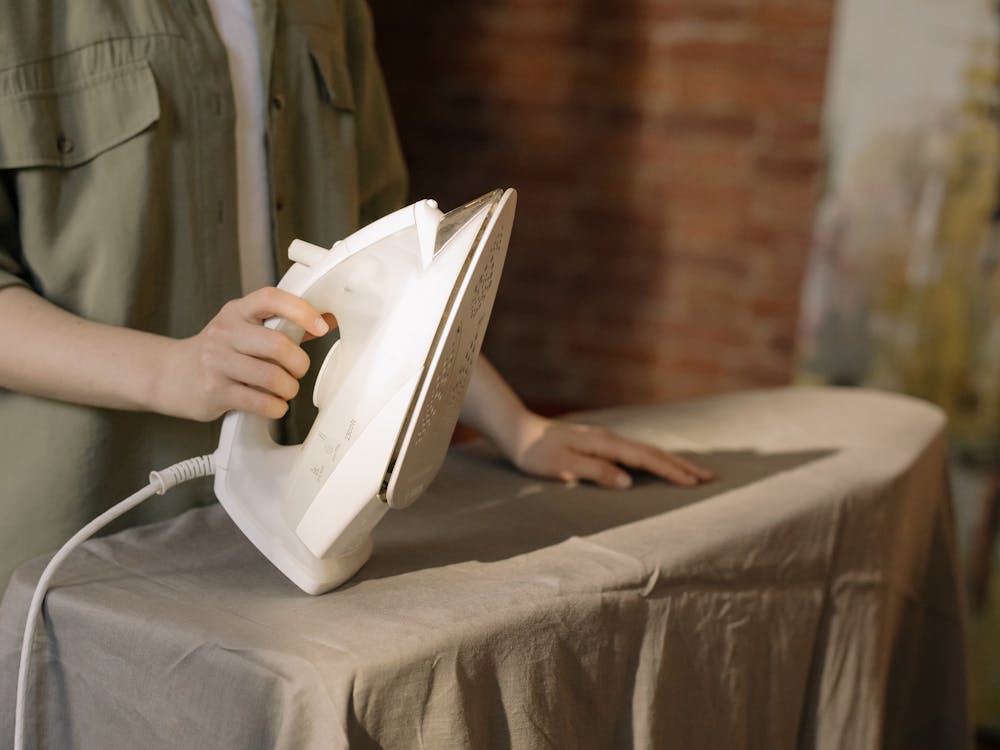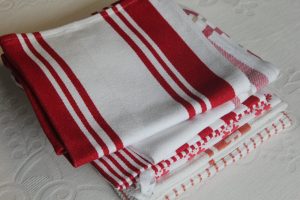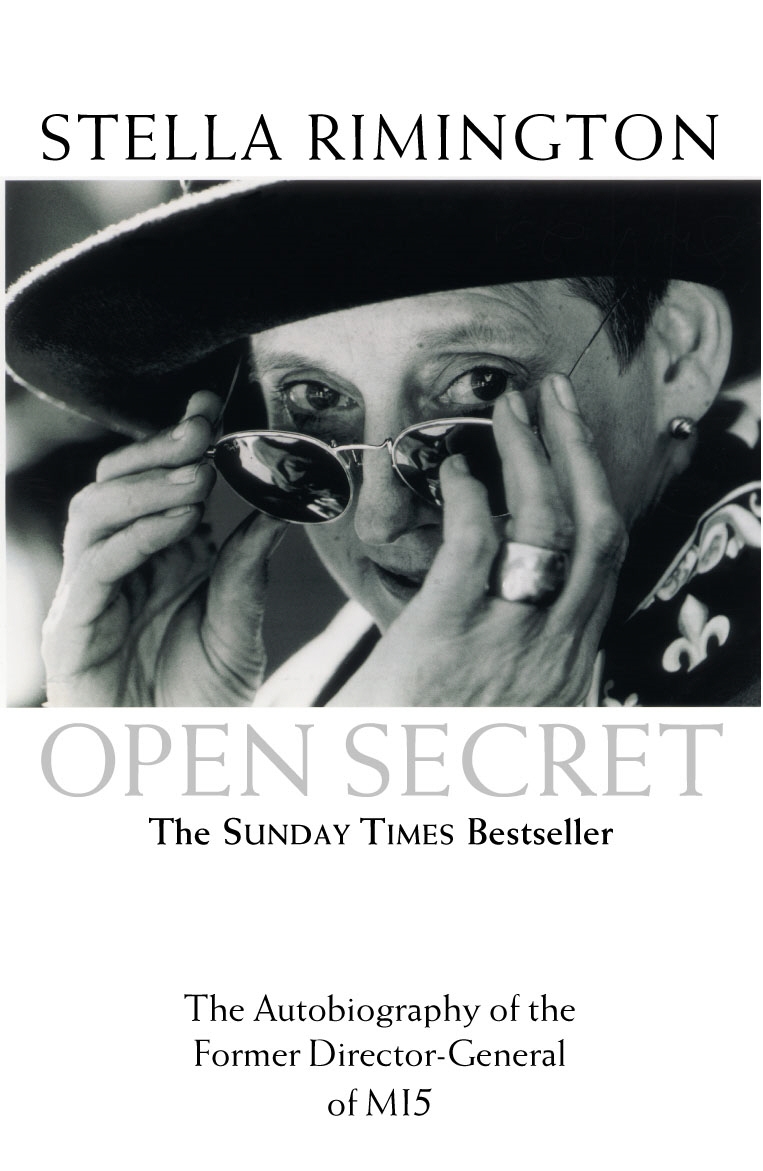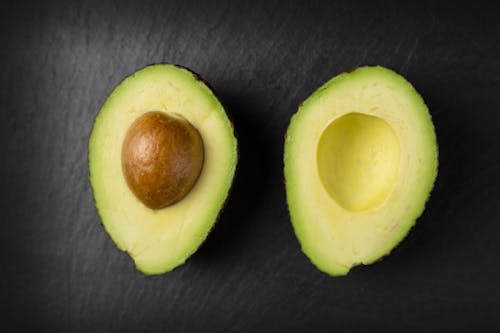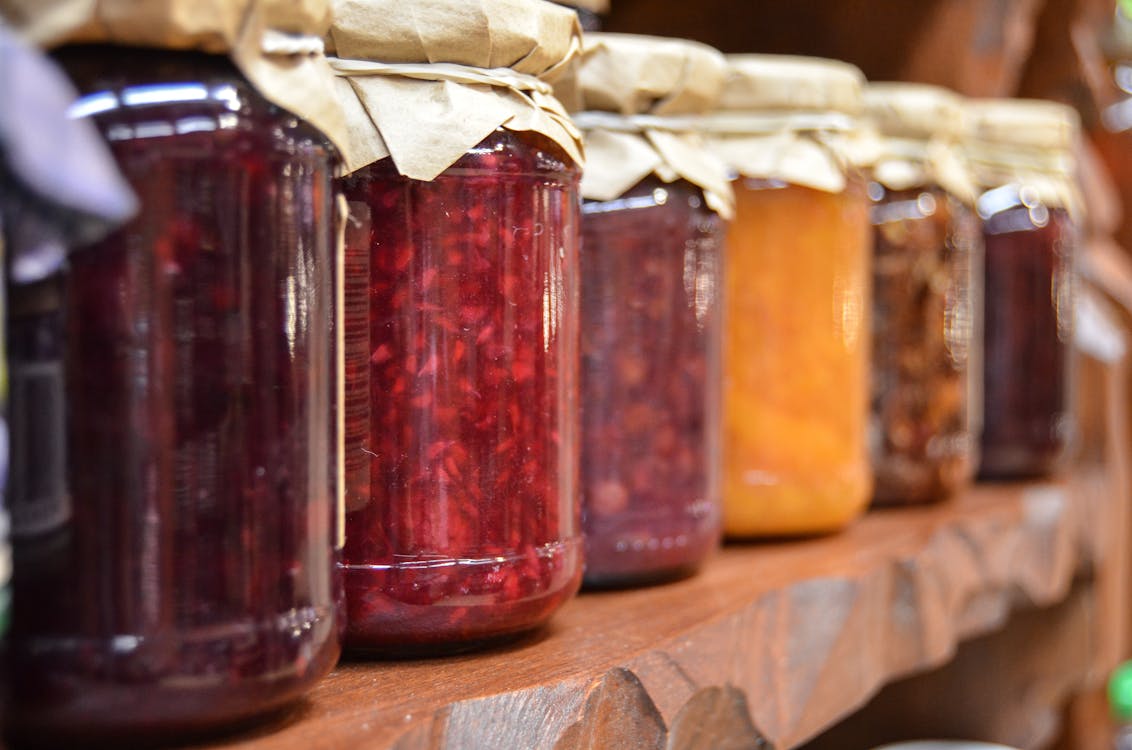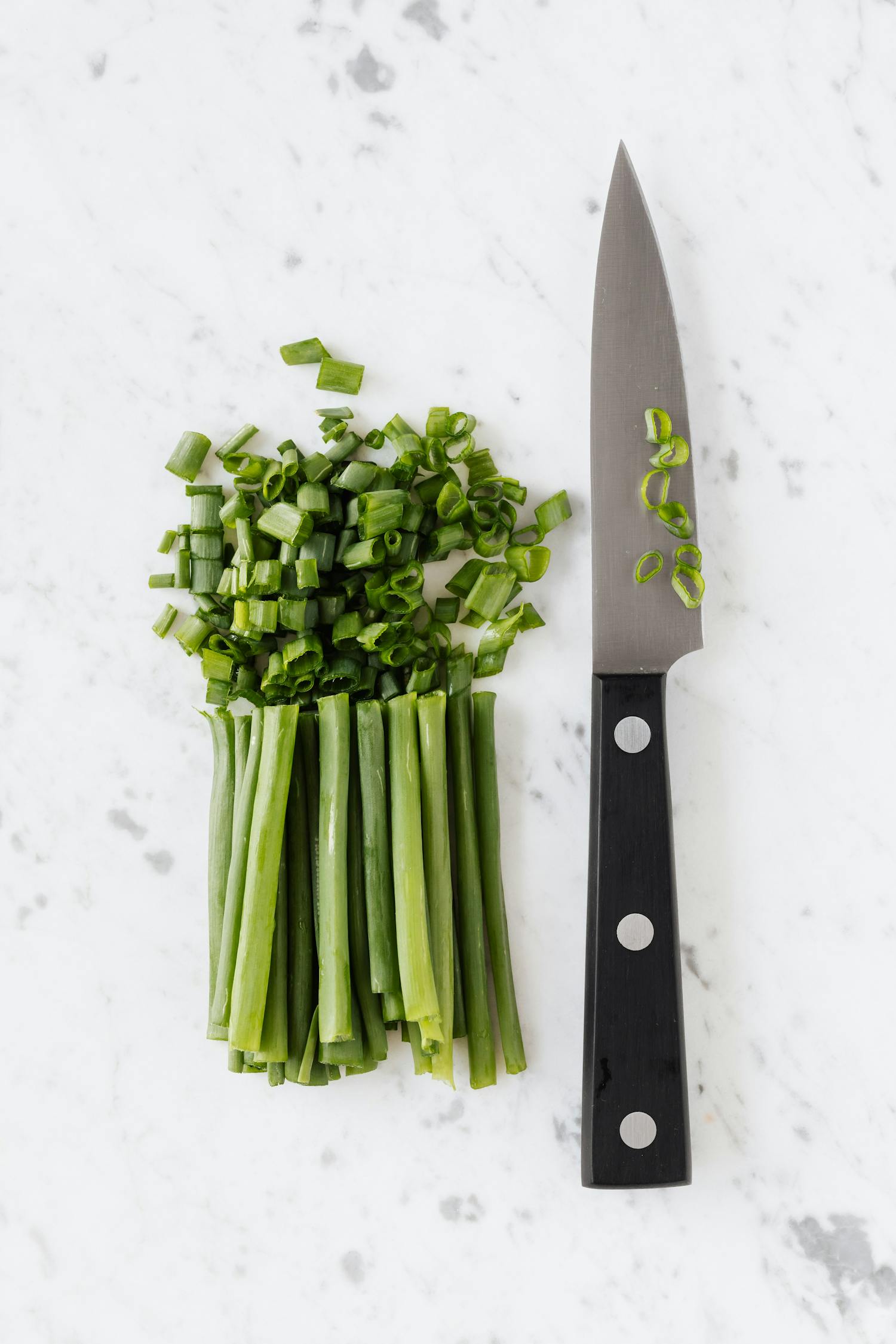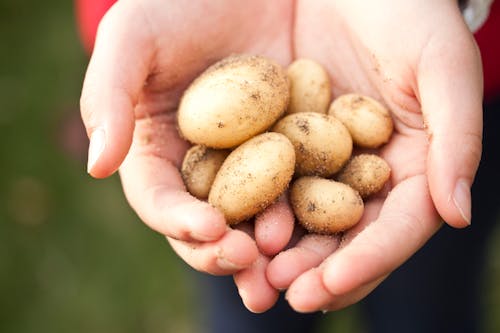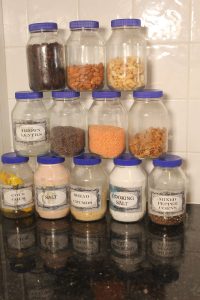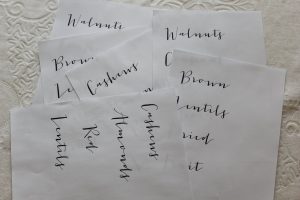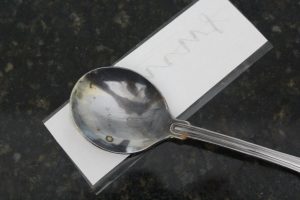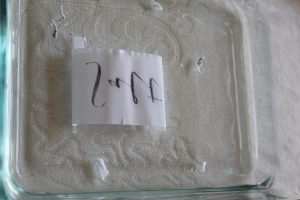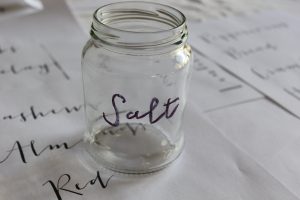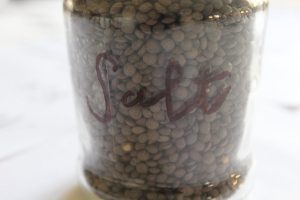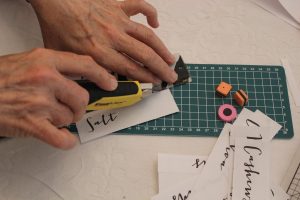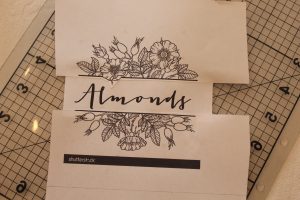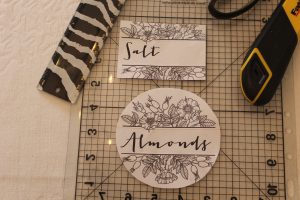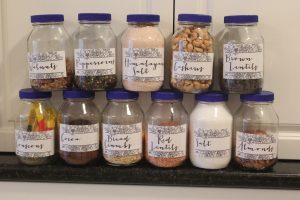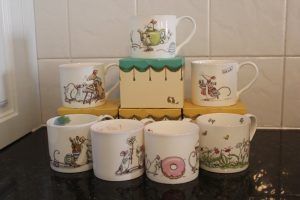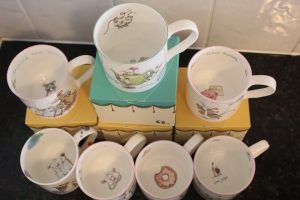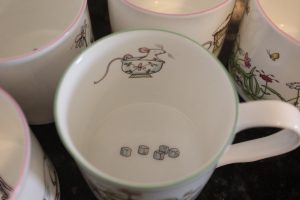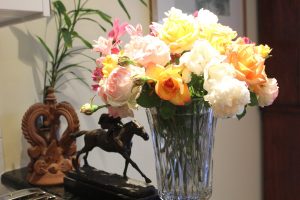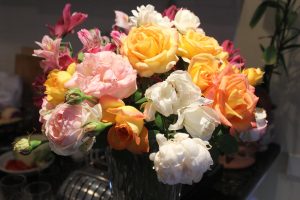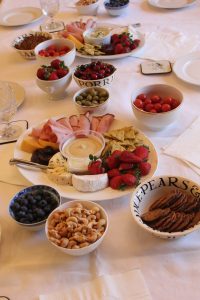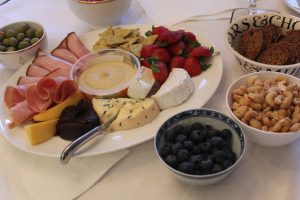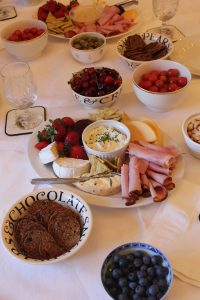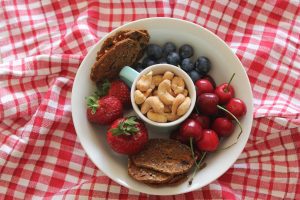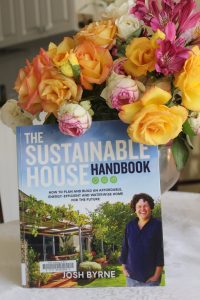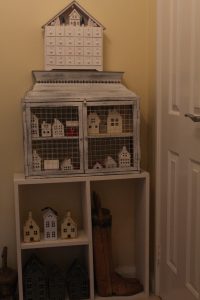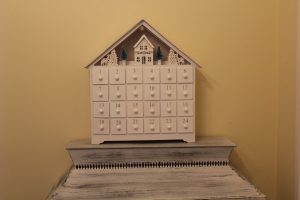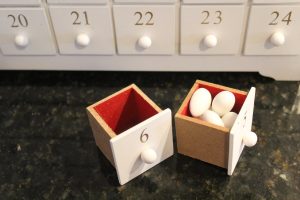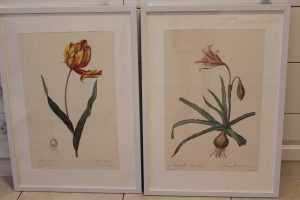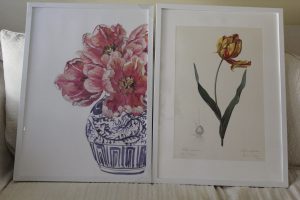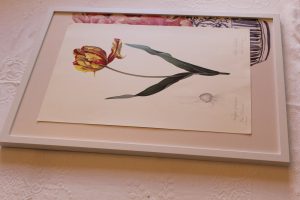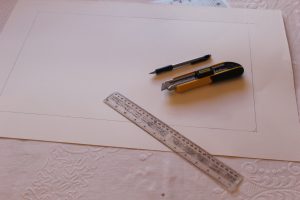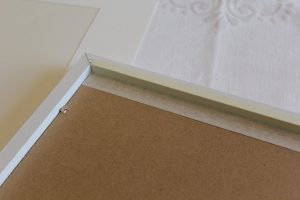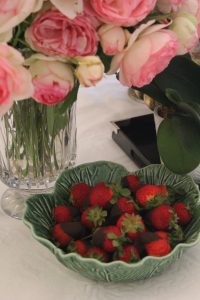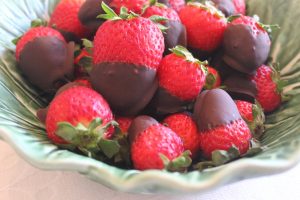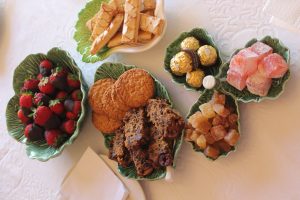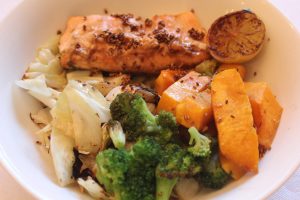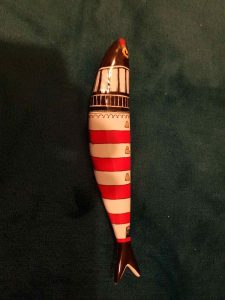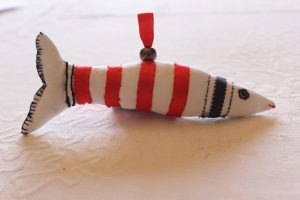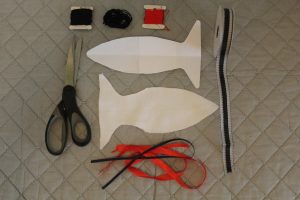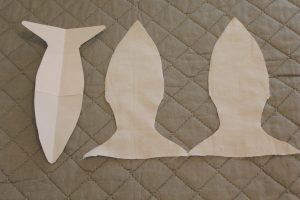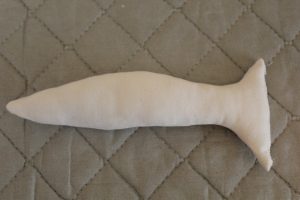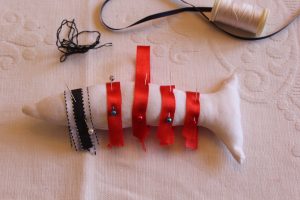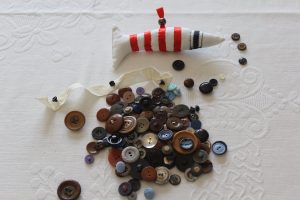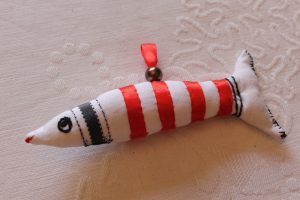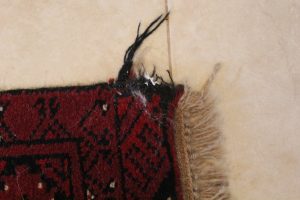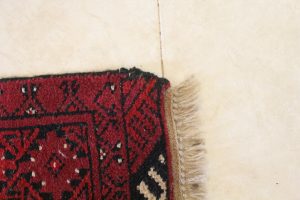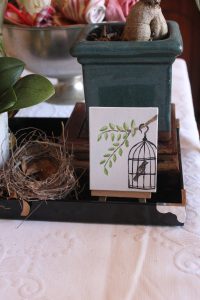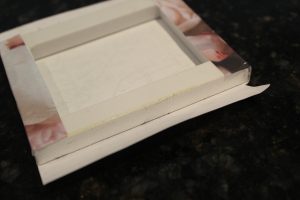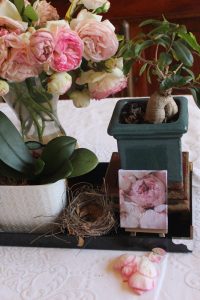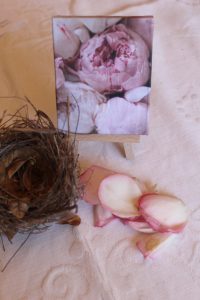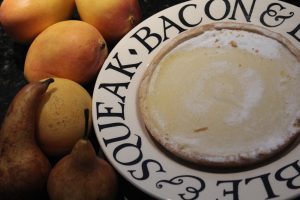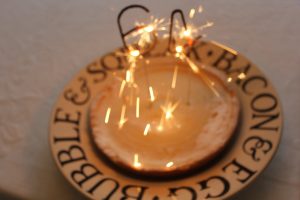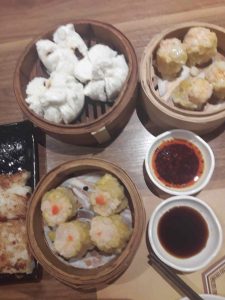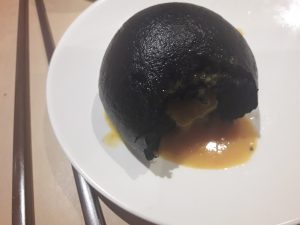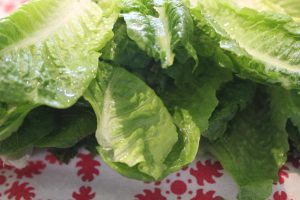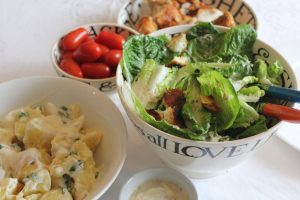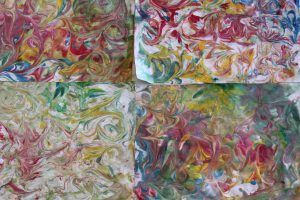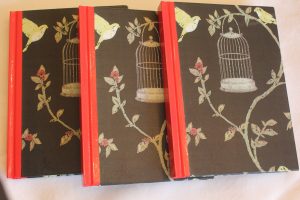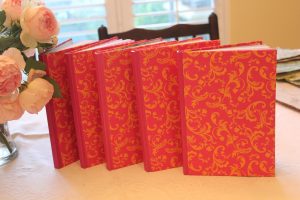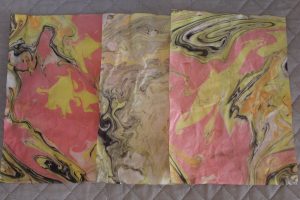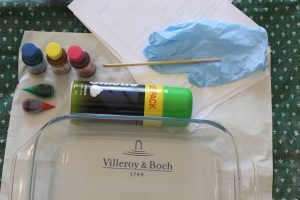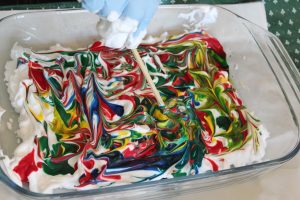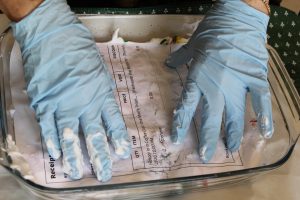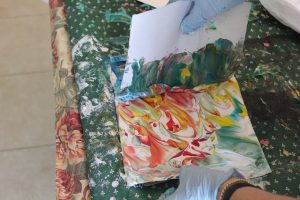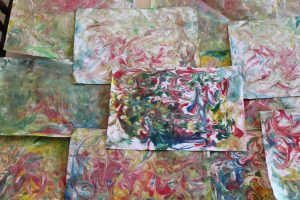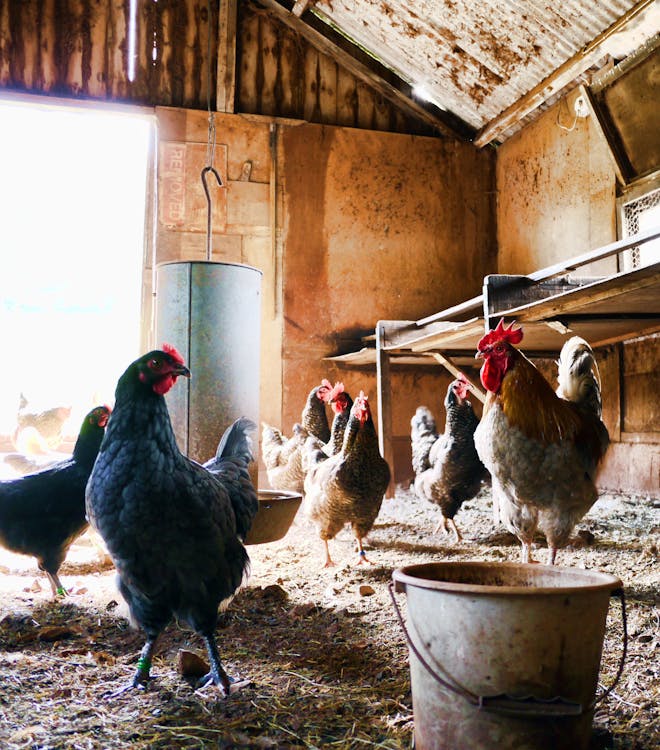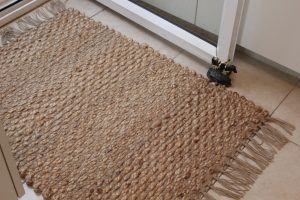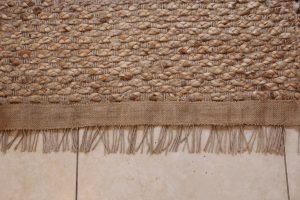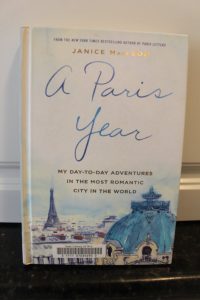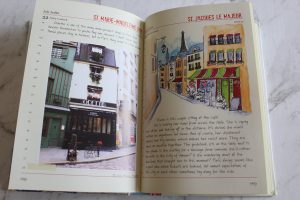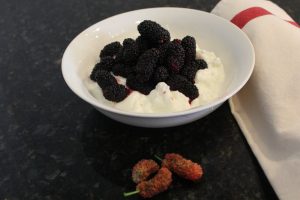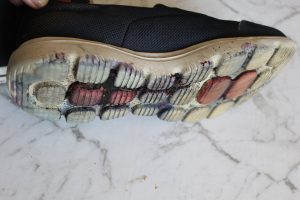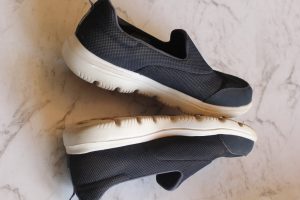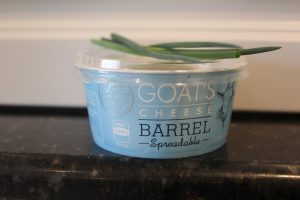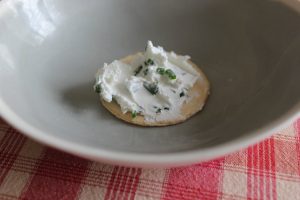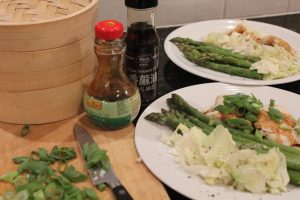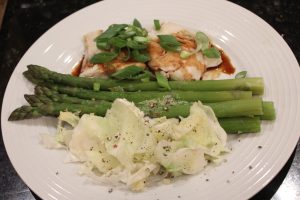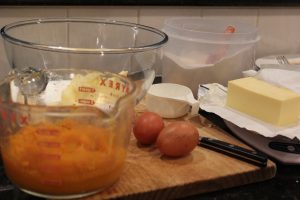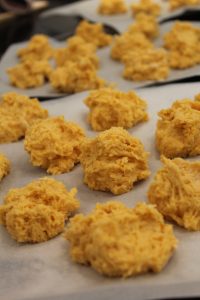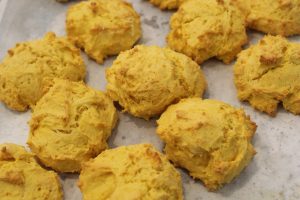USING MY HANDMADE BOOK
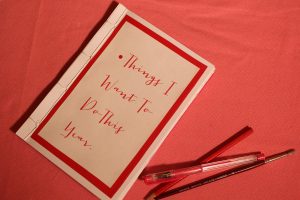

I made this book, or zine, during a recent workshop. I knew I wanted to use it to record some of the things I planned to do this year. First on my list was a water colour course to learn how to do quick paintings of places we visit. I’d seen people with their papers, pens and small paint boxes drawing and painting when we traveled and I wanted to do that, too.
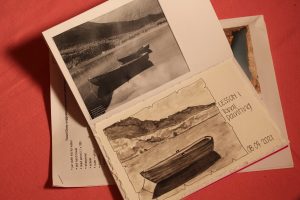

These gorgeous mementos feature quickly completed views. In our course we started with tonal paintings, then coloured versions of the same image. Our next lesson was using washes with black silhouettes.
I’ve always glued maps, tickets and photos into my journals when we travel but really like these quick paintings. I have illustrated my notes with sketches but I’ll create an outdoor paining kit and buy some water colour paper for our next trip and do some paintings. I’m looking for an A5 pad so I can paint then tear out the finished work and glue it into my every day journal.
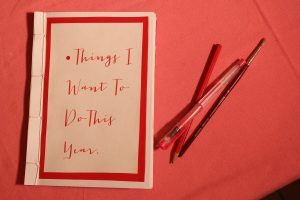

Had some leftover papers of the right size and thickness and some embroidery thread so I made another book.


Used a template to mark the stitching holes. Poked them through using an awl.
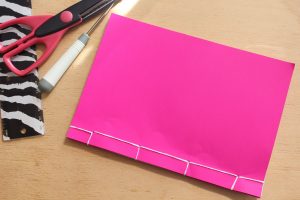

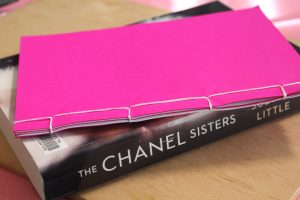

Stitched the binding. The new book, for idle thoughts, is complete.
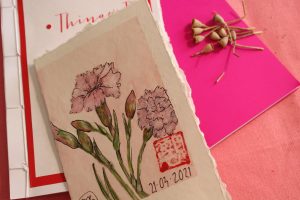

While I had scissors, glue and paper out on the table, I also made an insert for the card I’d painted for Mothers Day. Australians celebrate Mothers Day in May, so that’s when I’ll give this card to my Mother. She grows many, many carnations and has a constant supply of cut flowers. I love the peppery scent.
FAST, FABULOUS FOOD
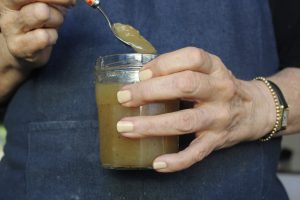

Last week I made a pot of Guava Jam using divine smelling guavas given to me. Although I halved the amount of sugar suggested in the recipes I read, the Guava Jam was still very sweet. I heated a few dessertspoons of the jam in a cup in the microwave for 30 seconds and then drizzled the warm jam onto ice cream. Instant fabulous, delicious dessert! We really enjoyed it.
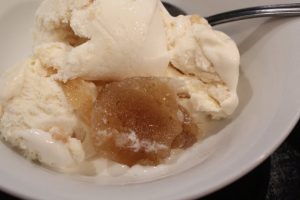

And not so fast, but equally easy to eat, Pear Crumble. Pears are in season so I made a Pear Crumble hoping for cooler evenings. Hasn’t really happened yet, but the dessert was great. I added nutmeg to the crumble and we enjoyed the extra depth of flavour. Looks a lot like icecream and guava sauce, tastes very different. I’ll be making that again!
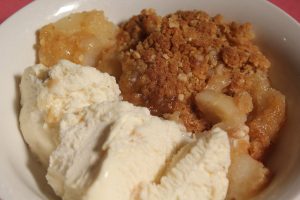

READING
I’ve written about Kit Kemp, co-owner of Firmdale Hotels, interior decorator and author, twice in the past few blogs, so I’ll just write briefly about her latest book I’ve been reading. Called “A Living Space” it is actually one of her earlier publications.
Kemp focuses on you trusting your instinct and ignoring the rules! She combines antiques with newly made objects or recycled pieces, bespoke with readily available furniture and very valuable artifacts with ephemera. She encourages her readers to look at texture, add some humour and surround yourself with comfort and colour. Live with what you really, really like around you.
Chapter headings include Bespoke And One Off’s, Antique With Modern, Compare And Contrast, Art And Collections and an amusing chapter called Dogs. Kemp champions emerging artist and crafters whose work sits comfortably with traditional furniture or family heirlooms.
Kemp often frames pieces of fabric or wallpaper which look interesting on the wall if you have any wall space to spare. I haven’t. Obviously, I enjoy her style of decorating, her combinations of affordable and valuable, her cheeky additions and the pages and pages of gorgeous photos.
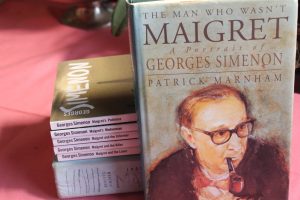

A few weeks ago my husband read “The Man Who Wasn’t Maigret, A Portrait of Georges Simeon”. He is the author of the Chief Inspector Maigret series. This biography resulted in my husband getting fifteen Maigret books from the library. After he finished the first one he put it on my side of the bed and said, “You’ll enjoy this.” I’m on number nine, now and looking forward to the rest.
Some interesting facts about Georges Simeon:
1) He wrote 193 novels under his own name and another 200 under a variety of pseudonyms.
2) Maigret books sold over 500 million copies in 55 languages in Simeon’s lifetime. Only Jules Verne and Shakespeare have sold more.
3) Almost all of his books took less than 2 weeks to write. He wrote without any revision.
4) Simeon wrote two autobiographical novels, followed by a 1048 page autobiography and then a 21 volume memoir of his life. He frequently contradicted himself in them!
5) Simeon desperately wanted to be seen as a serious writer, an intellectual and to be nominated to the French Academy. It never happened.
Simeon is a marvelous story teller. His writing style is simple and shows a deep understanding of human nature. He limits the actual vocabulary he uses in the Maigret series to about 2000 words. He is Flemish, not French and a few of his stories are set in Belgium, others in Holland but mostly set in Paris. As a travel starved Francophile, I have enjoyed meandering around Paris with Maigret although I wouldn’t like to see some of the things he finds. He is famous for investigating murders.
Between 1931 and 1972, Georges Simeon published seventy five Chief Inspector Maigret stories as well as another twenty eight short stories. Most of these have been republished by Penguin in the past six years. Great reading.
Yesterday was Earth Day. The enormous drop in pollution resulting from less flying, cruising and manufacturing during the early days of CV-19 indicates we can make a change. And please try and reduce the use of single use plastics.

